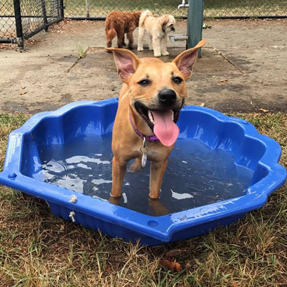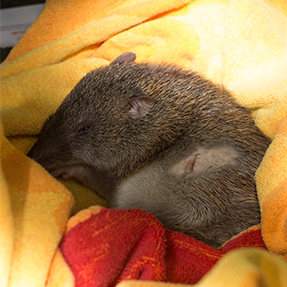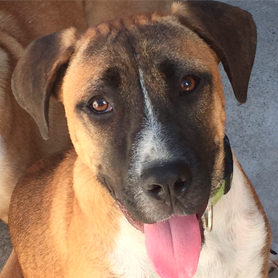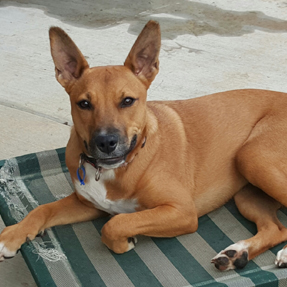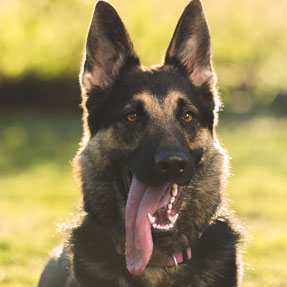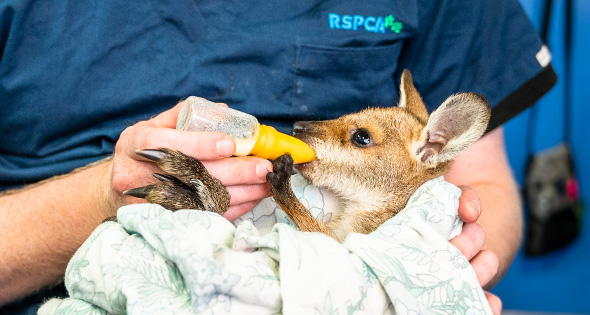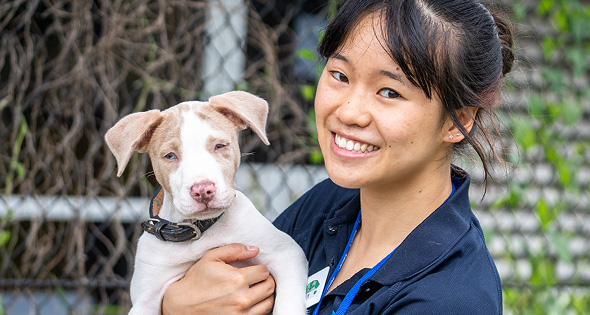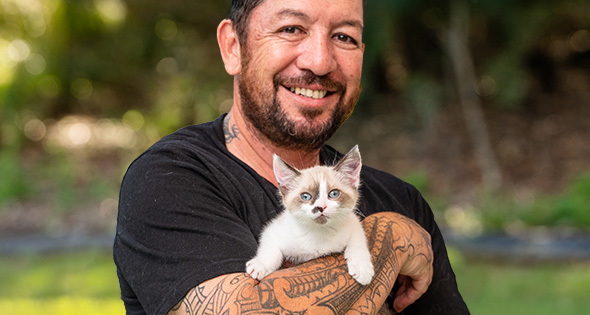The Royal Society for the Prevention of Cruelty to Animals Queensland (RSPCA Qld) is the state’s leading animal welfare charity, dedicated to improving the lives of all domestic, farmed and native animals throughout Queensland. Formed in 1883 in Queensland, animals have been turning to us for nearly 140 years.
From one Inspector and several supporters in its fledgling years, the Society has grown to have over 415 staff throughout the state, generously supported by volunteers. Every person who works directly or indirectly with the RSPCA is dedicated to increasing the opportunities and improving the quality of life of each animal in their care.
RSPCA Queensland is a non-government, community based charity.
Caring for over 45,000 animals every year, RSPCA Queensland relies heavily on the generosity of animal lovers in the community to continue to provide lifesaving services to animals in need.
Our operations are 96% funded by donations from thoughtful Queenslanders, just like you.
Timeline
Check out this snap shot of RSPCA Qld's rich history. These milestones have helped mould us into who we are today.
1824 - The first Society for the Prevention of Cruelty to Animals is formed in London, largely as a result of agitation by a young Irish politician, Richard Marten, MP for County Galway, Ireland. Marten piloted the first anti-cruelty bill through parliament in 1822, giving cattle, horses, and sheep a small degree of legislative protection.
1840 - The Society’s work is held in such high regard that Queen Victoria gave her permission for the word “Royal” to be added to the Society’s title. Many years later, Queen Elizabeth II was to bestow a similar royal warrant on the Queensland Society.
1876 - The Queensland Society is first formed at a meeting in the Chamber of Commerce, Town Hall, Brisbane, on 11 September. Unfortunately, public interest is low and the Society folds.
1883 – The Society is reformed under the Presidency of the Mayor of Brisbane, Alderman A R Byram. The object of the Society is to “prevent, as far as possible, Cruelty to Animals; by enforcing, where practicable, the existing laws, and by procuring such further legislation as may be found expedient to obtain this object.”
1884 - A paid Inspector, Mr Marlow, is appointed and in the year ending September 1884, 350 cautions are issued, mainly for ill-treatment of horses. Honorary Inspectors are also appointed, both in Brisbane and in other Centres around the State.
1884/5 - From its earliest beginnings, the importance of educating young people in animal welfare issues was recognized. In December 1884, invitations were sent to various schools in and around Brisbane asking students to write an essay on the duty and benefits of kindness to dumb animals. Prizes were presented by the Governor, His Excellency Lord Musgrave and Lady Musgrave on 27 April 1885. This was the start of a long tradition of annual essay prizes in Queensland schools and an emphasis on educating young people in animal welfare issues.
1888 - A Junior Branch of the Society, the Band of Mercy, was formed in 1888, and the Band of Mercy Advocate distributed to various schools. Members adopted the following pledge: “We agree to be kind to animals, and to do all in our power to protect them from cruelty and promote their humane treatment.”
1890 - The Constitution of the Society is amended to include protection for children and the Society changes its name to the Society for the Prevention of Cruelty.
1890s - The Society also actively campaigns for legislation to protect children, culminating in the passage of the Protection of Children Act in 1896. (Over the twentieth century, the Government gradually assumed a greater role in the protection of children and old people and the Society’s involvement declined until it finally ceased around 1970.)
1884 – Funding becomes a problem. A total of £106/0/6 is raised in public contributions. The Society also receives a Queensland Government subsidy of £100/0/0, as well as £18/17/8 from Police Court fines.
1901 - The Society takes a leading role in the move for more effective legislation to prevent cruelty to animals, culminating in the passage of the Animals Protection Act in 1901.
1920 - five acres of land at Yeronga is set aside as a Reserve for Refuge of Aged and Starving Horses and Lost and Strayed Dogs. The Reserve is under the control of F A Stimpson, J D Weinholt, W C Horstman, A H Whittingham, and A D Walsh. (This Reserve will become the site of the RSPCA headquarters and shelter at Fairfield.)
1922 - A depot for stray dogs comprising three small covered yards with box shelters was established in 1922 at the Society’s expense at Mr George Lorimer’s Animal and Bird Shop in Petrie Bight. Strays could be left there where they were fed and watered by Mr Lorimer pending removal to the Horses and Dogs Refuge at Fairfield.
1925 - The Animals Protection Act is passed by the Queensland Parliament. Up until then, the Society had no legal standing and its officers no more authority than any other citizen. The new Act gives legal status to the Society and specific powers to its Inspectors.
1924-1925 - The annual intake of dogs at the Yeronga Refuge is 17.
1925 - The Society purchases a vehicle to aid in responding to calls and complaints more efficiently, and bring dogs back to the refuge. This sees the annual intake of dogs increase dramatically to 947 by 1928-1929. By the late 1920’s, cats are also accepted at the Refuge.
1928/9 - The annual intake quickly increased, and by 1928/9 the annual figure was 947 (compared with 17 just three years prior). “Of this number, 130 were boarders that were placed in the Refuge by their owners while absent on holidays, or for other reasons. The balance were stray or unwanted dogs that were collected by the Society in the Greater Brisbane Area, and removed to the Dogs’ Home at Yeronga. (by the late 1920s, cats were being accepted at the Shelter).
1951 - The annual intake of dogs and cats at the Refuge has increased to 9,241. Over time, extra accommodation and facilities are added so that all types of domestic pets, farm animals and wildlife can be accepted.
1963 - The administrative headquarters of the Society moved from the city into a new building at Fairfield, Brisbane. Ambitious refuge building programs were carried out in the late 1960s and 1970s at Fairfield
1973 - Dog registration was re-introduced in Brisbane, resulting in a big increase in the number of dogs coming in to the Yeronga Refuge.
1974 - A devastating flood hit Brisbane, inundating all animal accommodation at Fairfield (the previous head office), causing serious financial loss to the Society as the premises was not covered for flood damage. Every animal had to be evacuated during the night. Through the generosity of the RNA and I Association, the animals were accommodated at the Exhibition showgrounds for ten days. Staff and volunteers then had to take on the mammoth task of cleaning up after the flood as well as fielding phone calls from hundreds of distraught people who had lost their pets.
1978 - Brisbane City Council opened a desexing clinic for neutering animals on the Fairfield Refuge site.
1990s - Building programs were carried out around Queensland. Because of this growth, Animal Care Centres now exist at Cairns, Townsville, Bundaberg, Kingaroy, Noosa, Dakabin and the Gold Coast, besides the main Animal Care Campus in Brisbane. There are also a number of regional “Friends” groups raising funds and assisting in other ways.
1994 - The Annual Million Paws Walk, inaugurated in Brisbane in 1994, was so successful it went national in 1996. As the operations of the Society grew throughout the twentieth century, it became necessary for more innovative fundraising - hence the Million Paws Walk event, and other activities.
2001 - The Animal Care and Protection Act was passed, strengthening the laws against cruelty to animals and substantially increasing the penalties for mistreating animals.
2002 - The State Government committed $2.5 million dollar-for-dollar funding towards substantial capital works in upgrading refuges throughout Queensland.
2002 - An extensive program of education, particularly in schools, is now in operation. The Society works closely with the Australian Veterinary Association’s program for children, PetPEP. In 2002, the Society’s new mobile classroom, known as the EMU (Education Mobile Unit), is launched.
2002/3 - The Fairfield Centre took in a total of 19,645 animals, consisting of 6,996 dogs, 8,750 cats, 10 horses, 605 livestock, 2,227 wildlife, 610 other small pets, and 447 birds. The total intake for all the Queensland Animal Care Centres for 2002/3 was 33,984 animals.
2006 - In December 2006, RSPCA Qld welcomed a pledge of a $12 million lead gift from the Queensland Government towards the construction of the RSPCA Qld Animal Care Campus, originally marked for Redbank, since changed to Wacol. In an Australian first, this purpose-built facility will combine state-of-the-art shelter care with onsite headquarters for an expanded, statewide Humane Education Program.
2011 - We provided disaster relief to creatures great and small in the Brisbane floods at, followed by Cyclone Yasi. Inspectors and ambulance officers rescued wildlife stranded or washed away by the floods and cyclone. Throughout it all RSPCA Qld was there as the state’s other emergency service crew – for animals.2011 - Two animal evacuation centres were set up in Rockhampton during the flood
2011 - We pledged to improve the welfare of wildlife in Queensland. A formal agreement was signed between RSPCA Qld and the State Government to improve the efficiency of wildlife rescues state-wide by taking over the phone number for all wildlife emergencies. Ph: 1300 ANIMAL (1300 264 625)
2011 - We saw a new beginning with our RSPCA Brisbane Animal Care Campus at Wacol - The construction of the new facility was one of the major activities of the year, and arguably one of the most important milestones in the RSPCA’S history in Queensland.
The Brisbane Animal Care Campus is the most significant animal welfare centre in the southern hemisphere, caring for companion animals, farm animals and wildlife, as well as being a place of education to deliver our mission of ‘helping animals, enlightening people, saving lives.
2016 - RSPCA Qld changed to a company limited by guarantee.

